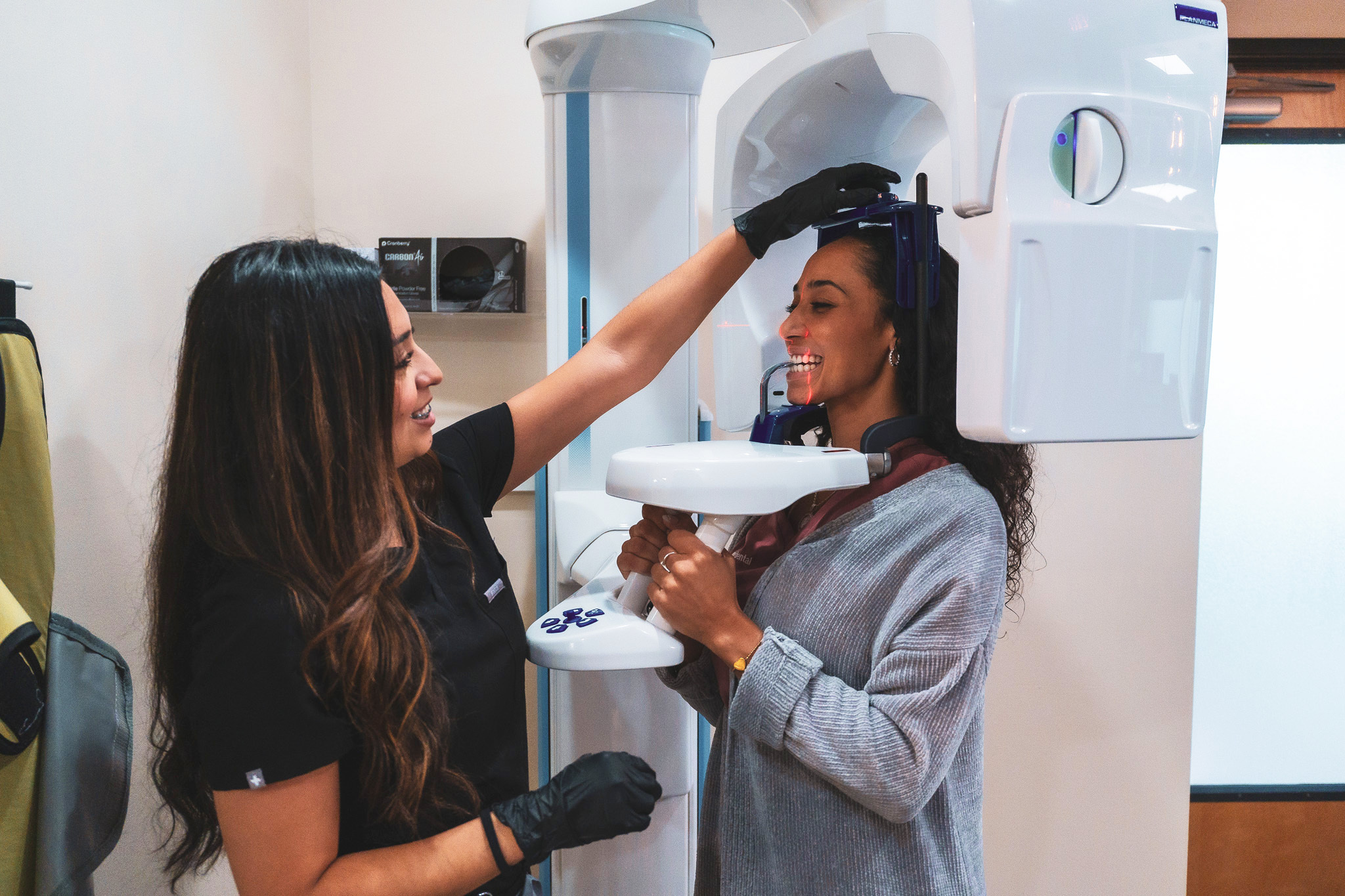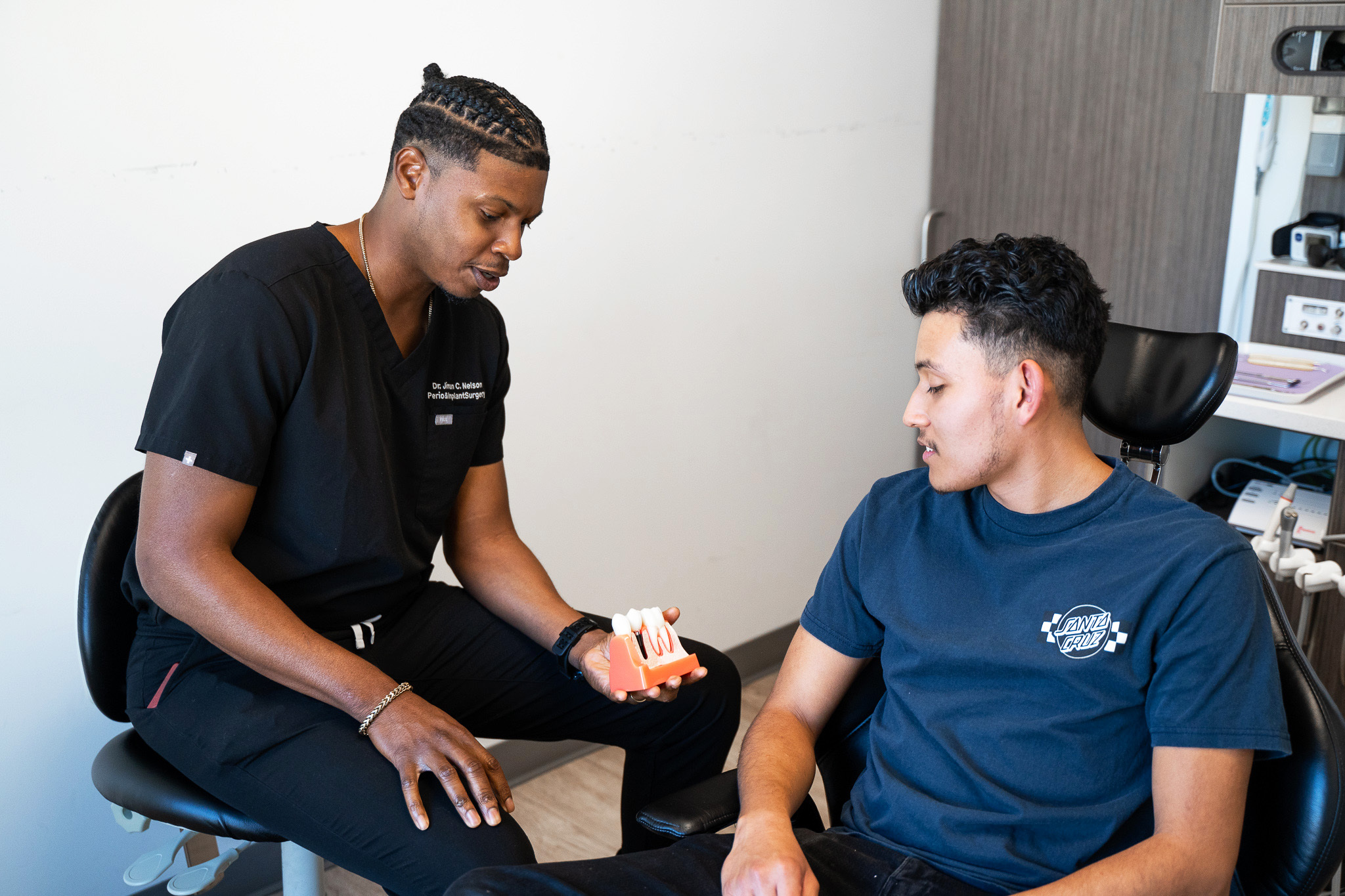Unfortunately, several of us will suffer from plaque and tartar on our teeth at some stage in our lives. Despite our best efforts, there will be some found on our teeth when we go for a check-up.
Unfortunately, several of us will suffer from plaque and tartar on our teeth at some stage in our lives. Despite our best efforts, there will be some found on our teeth when we go for a check-up. Sometimes it can build up because of our toothbrushes not reaching it and other times it is just because there is too much collecting for us to be able to remove it. The plaque is sticky and does not have a color; so, it can be hard to see. It is a combination of bacteria, food and saliva sticking to the teeth – usually overnight. It tends to form along the line where the teeth meet the gums.
If you do not manage to get rid of the plaque, then there is a bigger problem you could face. When it starts to harden, it becomes what we refer to as tartar and this will be a lot harder to get rid of. Some people will be lucky and find that they only ever end up with a small amount while others can end up with so much that they require a lot of intervention from a dentist.
The main reason that teeth show signs of plaque is because the teeth are not being properly cleaned. It does not mean that no effort is being made, just that not all the food and bacteria that is stuck to the teeth can be removed. Too often it is in a position where it cannot be reached and once it becomes hard, it is so difficult to remove with a standard toothbrush.
Anyone can be affected by plaque and tartar, although some will suffer more than others. If you do not clean your teeth well, it will start, and the lack of good cleaning will make it get worse. As a result, children will find they have it as they are not yet able to reach the parts of the teeth where it mostly occurs. It also seems that older people can suffer from it and this could be as they no longer take the same time, or maybe are not as aware of the change in color of their teeth due to failing eyesight. As teeth covered in plaque and tartar tend to range in color from yellow to brown, poorer eyes may not notice how bad it has become.
Although it is accepted that good oral hygiene will help prevent and fight against plaque and tartar, it is a dentist or dental hygienist who will have to remove it once it is in place. The reason for this is that untreated plaque will stick tightly to the enamel and require specialist instruments to remove it. As mentioned, it will take a dental professional to remove plaque as they will have the instruments and the knowledge of how to use them. If the plaque is removed, tartar will not be able to form, so the dentist will work to remove the plaque.
Cleaning your teeth will go a long way towards keeping your teeth plaque and tartar free, but it will not be enough on its own. To keep them in a condition that is good enough to stop plaque starting to form, there needs to be at least two cleans carried out at the dentist each year. Sometimes your dentist will carry it out, but there is no reason why it should not be the hygienist.
The toothpaste you use can make a difference, and one that has pyrophosphate in it will help with the job. It should also contain sodium hexametaphosphate that has been created to slow down the development of calculus. When they are used, it will be easier to keep the teeth clean and work towards breaking down stains that have collected on the enamel. Once that has been done, a barrier will be set up and it will be harder for plaque and tartar to cling to the teeth in the future.
Flossing is another way to limit the spread of the two problems. A small thread will be able to reach between the teeth in a way that a brush will not be able to. By flossing after each meal, you will be limiting the risk and making it easier for the professional to remove the small amount that may still build up.
As it can take as little as four hours after brushing for plaque to begin to build up, it is important to try and brush after every meal. Most people will remember to do this morning and night, but not all will do it at lunchtime. By the time the night time clean comes around, it could be 12 hours since lunch, and there may have been a few snacks as well as an evening meal since.

As well as looking unsightly when the teeth begin to stain and turn yellow and brown, if you allow plaque and tartar to stay on the teeth there can be further problems. If not treated, they can lead to holes developing in the teeth and this will require fillings and possibly something such as a crown or cap. As the teeth will be weakened, it can be expensive to correct.
The ideal way to have strong, clean and white teeth is to clean your teeth as diligently as you can, as well as getting help from your dentist near me when needed. You only get two sets of teeth and one set of gums, and if you don’t look after them, they will not be there for you. It may seem to be a simple problem – plaque does not seem to be the biggest problem in the world – but once it has taken hold, it is going to take more than a new toothbrush and toothpaste to get rid of it. Once tartar has set in, it will be even harder to get rid of it and get your teeth back to the way that you want them. Depending on your amount of build-up and the health of your gum and bone you may need a regular cleaning or possibly a deep cleaning to help.
Tartar is formed when a person does not take care of his oral hygiene properly. This happened when the accumulated plaque is not cleaned. After a considerable amount of time, it hardens to form tartar. It is well known that tartar can easily have a lot of bacteria gathered in it. These bacteria practically live and thrives on tartar. Since it cannot be easily removed, the bacteria continue to grow and reproduce on the teeth. They digest the remains of the food when a person consumes them. Then they produce acids which can very easily eat away the enamel of the tooth. This also evidently results in cavities.
If left untreated, they can go deeper into the enamel and cause decay. If this decay reaches the pulp of the tooth, then a person has no other choice but to get either a root canal or perhaps even complete extraction of the tooth. All of this results in severe pain for the person suffering from it.
Even the mere presence of the bacteria in tartar causes inflammation. Over time it leads to a situation called periodontitis. Just like any other bacterial condition, this can grow and trigger other complicated dental conditions if these are left ignored or untreated. To avoid all these conditions, it is better than you seek an in-office dental cleaning to remove the tartar gathered on the teeth.
Dental plaque is a mass of bacterium that builds up on the surface of the teeth on the inside, outside and between the teeth or below the gumline. The plaque can be identified as a pale yellowish deposit on the teeth. If left unremoved the plaque can turn into tartar which can be harder to remove and would require a dentist to remove it. To prevent the buildup one can do regular brushing and flossing to maintain good oral hygiene.
Yes, tooth whitening remedies and dental treatments can help to remove the plaque from the teeth. For example, you use a whitening toothpaste to whiten teeth and to apply if you use a toothbrush which will in return help to remove the plaque as well as applying the toothpaste. However certain whitening products cannot remove plaque as they can only work once the plaque has been removed. Same goes for a dental whitening procedure; the plaque needs to be removed before the tooth can be bleached so this means that the plaque is removed before the whitening treatment can begin, and it cannot be removed by the whitening treatment.
Houston | Katy | Montrose | West University Place | Greater Third Ward | Greater East End | North East Houston | Houston Heights | Central Northwest | Fairbanks | Acres Home | East Houston | Southeast Houston | Central Southwest | Fort Bend Houston | Brays Oaks | Meyerland Area | Sharpstown | Alief | Westchase | Memorial | Northwest Houston | Katyland | Whispering Lakes | Pine Lakes | Woodcreek Reserve
Visit us today at URBN Dental as a walk in patient or call us at 281-584-3123 for an appointment at a time of your choosing! Here is to permanent smiles and stronger teeth for all!
No Insurance? No problem.
© Copyright 2025 | Designed & SEO Optimized by The Doctors Marketing
Disclaimer: URBN Dental uses restorative materials such as Admira Fusion® by VOCO, which are free of BPA and Bis-GMA, and are not known to degrade into microplastics under normal oral conditions. While marketed as biocompatible and free of traditional plastic monomers, no dental material is guaranteed to be completely risk-free for all patients. This information is provided for educational purposes and does not constitute medical or regulatory advice.

Discover your perfect smile with a FREE Invisalign assessment.

Receive a complimentary 3D scan ($300 value) when you proceed with implant care.

Speak with our experts about your smile goals from the comfort of your home.
Discuss your smile goals with our experts—choose an in-office visit or a convenient 15-minute phone consult.

Quick, affordable care when you need it most.

Have questions about implants? Get personalized guidance in a brief phone call.